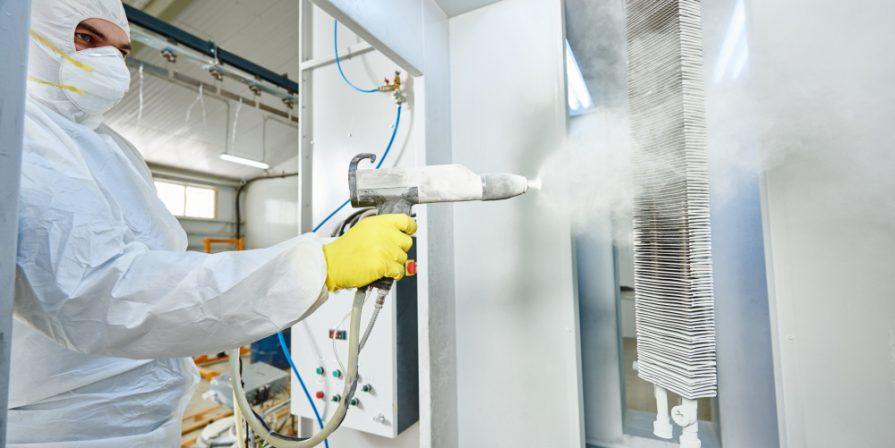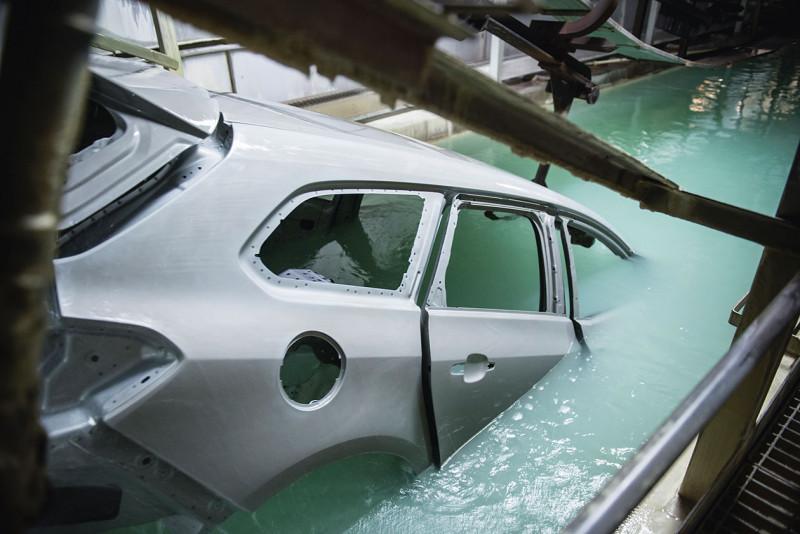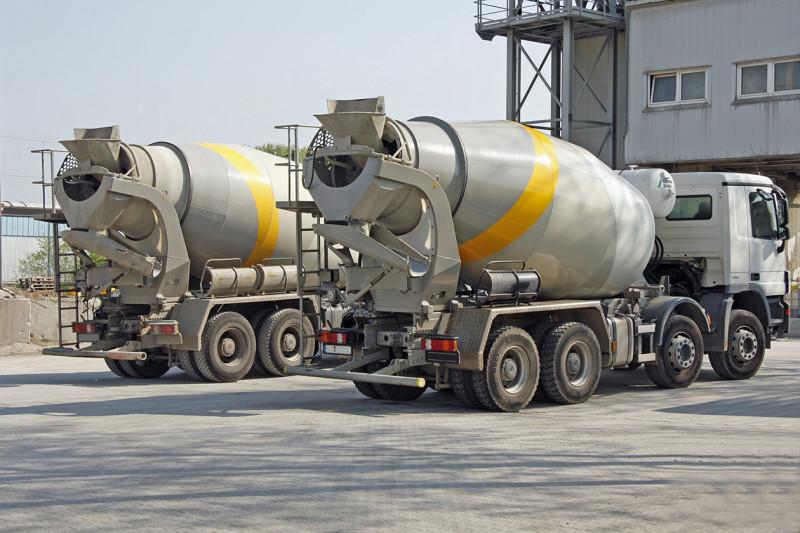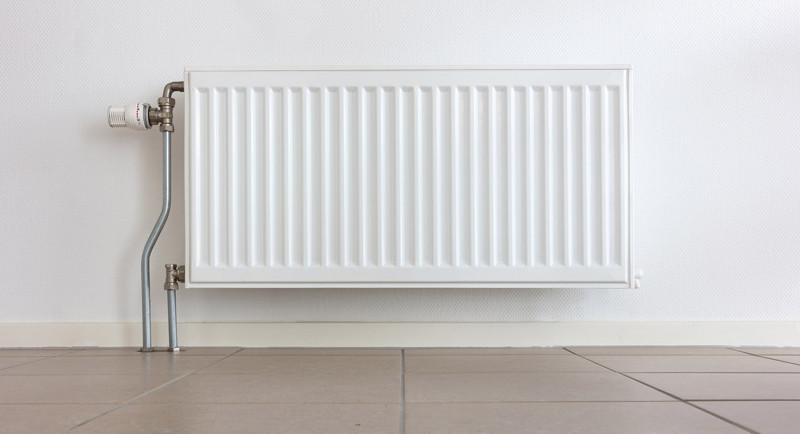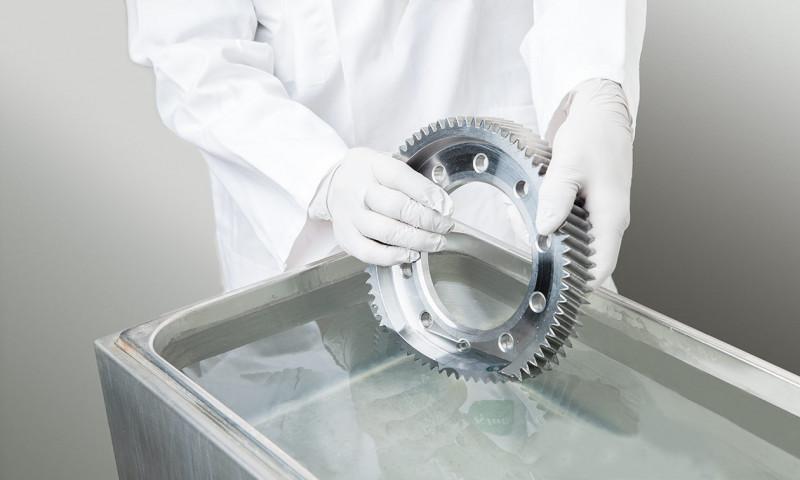« Overview of Phosphating Processes »
Phosphating refers to surface treatment processes that create specific protective layers on metal surfaces made of iron, zinc, or manganese. These layers are electrically insulating and contribute to corrosion protection, improved paint adhesion, or reduced wear. The intended use of the metal parts and the type of metal determines which of these functions should be fulfilled and which methods are employed.
Basics of Phosphating
Phosphates
Phosphates are salts of phosphoric acid, which consists of three hydrogen ions and one phosphate ion. Its chemical formula is H₃PO₄. During salt formation, one, two, or all three hydrogen ions are replaced by other ions, resulting in primary, secondary, or tertiary phosphates. Some phosphates are sparingly soluble or insoluble in water. When formed during chemical reactions in aqueous solutions, they precipitate as solid substances. This process is utilized in phosphating to produce conversion coatings. A conversion coating is created through the chemical transformation of the surface regions of the material.
Activation
To phosphate a metal, it is first activated. This means the metal is brought to a state where it can chemically react. Through contact with an acidic or alkaline medium, metal ions are dissolved from the surface and can then combine with components of the solution. For activation, diluted phosphoric acid solutions or special compounds acting as seed crystals are often used.
Layer Formation
The dissolved metal ions react with the components of the treatment solution. During phosphating, phosphates are formed, which arrange into crystal lattices and deposit on the surface. The crystals grow until the neighboring crystals hinder their growth, forming a dense protective layer that prevents further dissolution of ions into the solution. When highly magnified, the outer contour of this layer resembles a surface sprinkled with fine gravel. The composition of the phosphate layer depends on the components of the treatment solution and the reaction conditions.
Surface treatments distinguish between non-layer-forming and layer-forming processes. Non-layer-forming processes supply only the phosphate ion, which bonds with the metal ions from the material. Layer-forming reagents also provide additional metal ions, such as zinc, calcium, nickel, magnesium, titanium, or manganese.
Technical Implementation
The technical implementation involves spraying the treatment solution onto the material surface or immersing the parts in baths. The reaction conditions determine the composition, shape, and thickness of the conversion coating. These conditions include the concentrations of the solution components, pH value, and temperature. Another influencing factor is the dwell time during which the treatment solution remains in contact with the surface. A phosphating system consists of multiple stations that the parts pass through. Before starting, the surface must be cleaned of any corrosion products, scale, and oils or greases to ensure an even coating. Usually, the activation of the material occurs simultaneously
After the phosphating process, the parts must be thoroughly rinsed to prevent residues of the treatment solution from drying and forming salt crusts. The final step involves rinsing with fully demineralized water. Based on the active substances used, phosphating processes are categorized into iron phosphating, zinc phosphating, and manganese phosphating.
Iron Phosphating
Iron phosphating is used to protect sheets and other components from corrosion and provide a base for painting. This method can treat iron, zinc, and aluminum. Since activation and phosphating can occur in a single step, this type of coating is particularly cost-effective and versatile. Coating occurs at temperatures between 77°F and 149°F (25°C and 65°C) and pH values of 4 to 6, forming layers weighing 0.2 to 0.8 g/m² (grams per square meter).
Zinc Phosphating
Zinc phosphating is suitable for parts made of iron, galvanized iron, and aluminum. These layers offer higher corrosion protection than those created by iron phosphating. Zinc, calcium, and sometimes iron, nickel, or manganese are part of the layer formation. The process is conducted at temperatures of 95°F to 176°F (35°C to 80°C) and pH values of 2.2 to 3.2. Zinc phosphate deposits weigh between 1.5 and 30 g/m² (grams per square meter).
Manganese Phosphating
Manganese phosphating is suitable for coating steel surfaces, creating non-metallic, friction-reducing layers with excellent break-in protection for engines and gears. After manganese phosphating, parts are typically immersed in an oil bath. Manganese phosphate layers are formed at temperatures between 194°F and 203°F (90°C and 95°C) and pH values of 2.2 to 2.4, achieving layer weights of 10 to 25 g/m² (grams per square meter).
Comparison with Other Surface Treatment Methods – Blackening
Surface treatment encompasses various techniques to modify the properties of workpiece surfaces. These include mechanical methods involving material removal, coating methods that apply foreign material, and treatments that create conversion layers.
The most well-known methods in this group include chromating, phosphating, chromate-free processing, and blackening.
Properties of the Protective Layer
Phosphate layers are fine-crystalline, consisting of iron, zinc, or manganese phosphate, and occasionally containing calcium, magnesium, or nickel. They have a thickness of up to 0.0004 inches (10 µm) (0.0008 inches or 20 µm in some cases), which must be considered for tight tolerances, since this is an additional layer added the piece. The irregular layer contour ensures good adhesion of corrosion protection oils, which do not easily wipe off during handling.
In contrast, blackened layers are amorphous with disordered, uniform structures composed of iron oxides. Their thickness is approximately 0.00004 inches (1 µm), and since material removal equals material addition, they pose no issues for tight fits. This method is used for tools, machine parts, and firearms where dimensional accuracy and corrosion protection are crucial. The original surface texture of the material remains intact. However, the corrosion protection of blackened layers is lower than that of zinc or manganese phosphate layers, and oils adhere less effectively to their smooth surfaces.
Process Parameters
Phosphating occurs at temperatures between 95°F and 203°F (35°C and 95°C), with treatment solution exposure times ranging from 2 to 15 minutes or less in inline processes. Blackening requires higher temperatures of 248°F to 302°F (120°C to 150°C). Handling highly concentrated blackening salt solutions (primarily caustic soda, sodium nitrite, and/or sodium nitrate) at these high temperatures demands specific safety measures. The solution must act on the surface for 5 to 20 minutes.
 Kluthe Magazine
Kluthe Magazine
